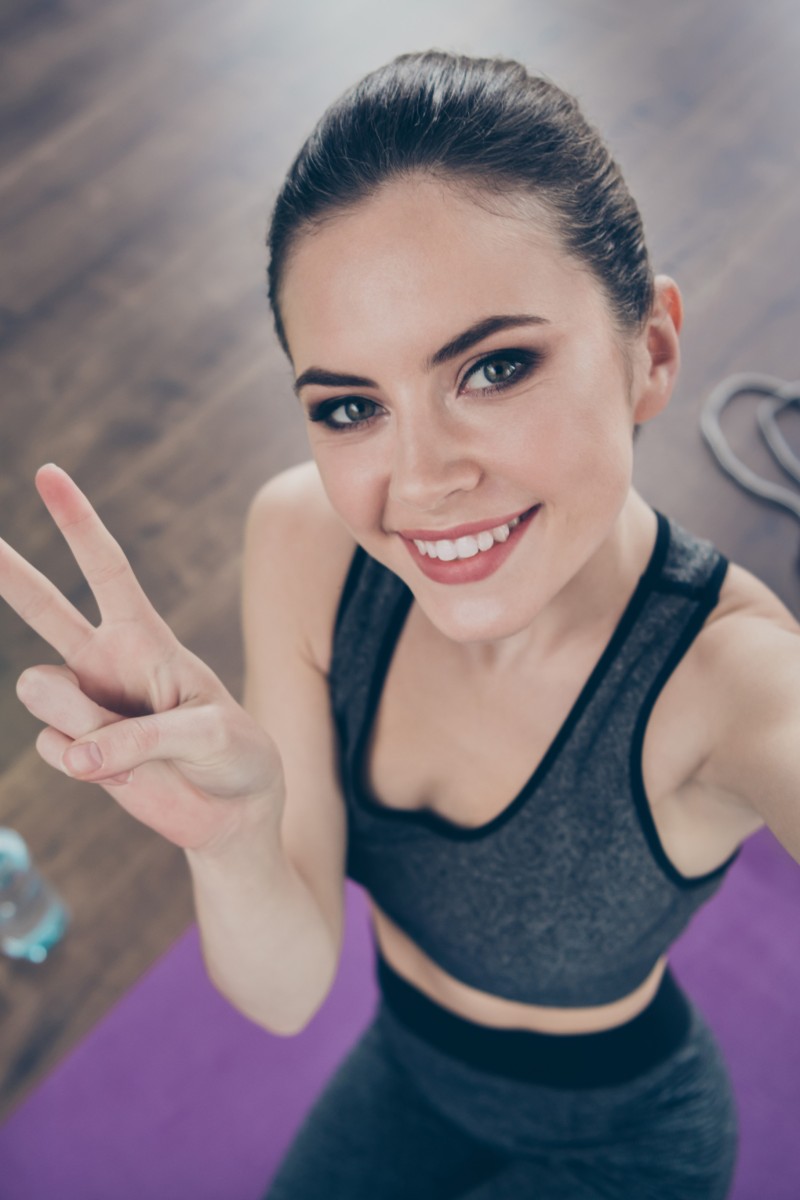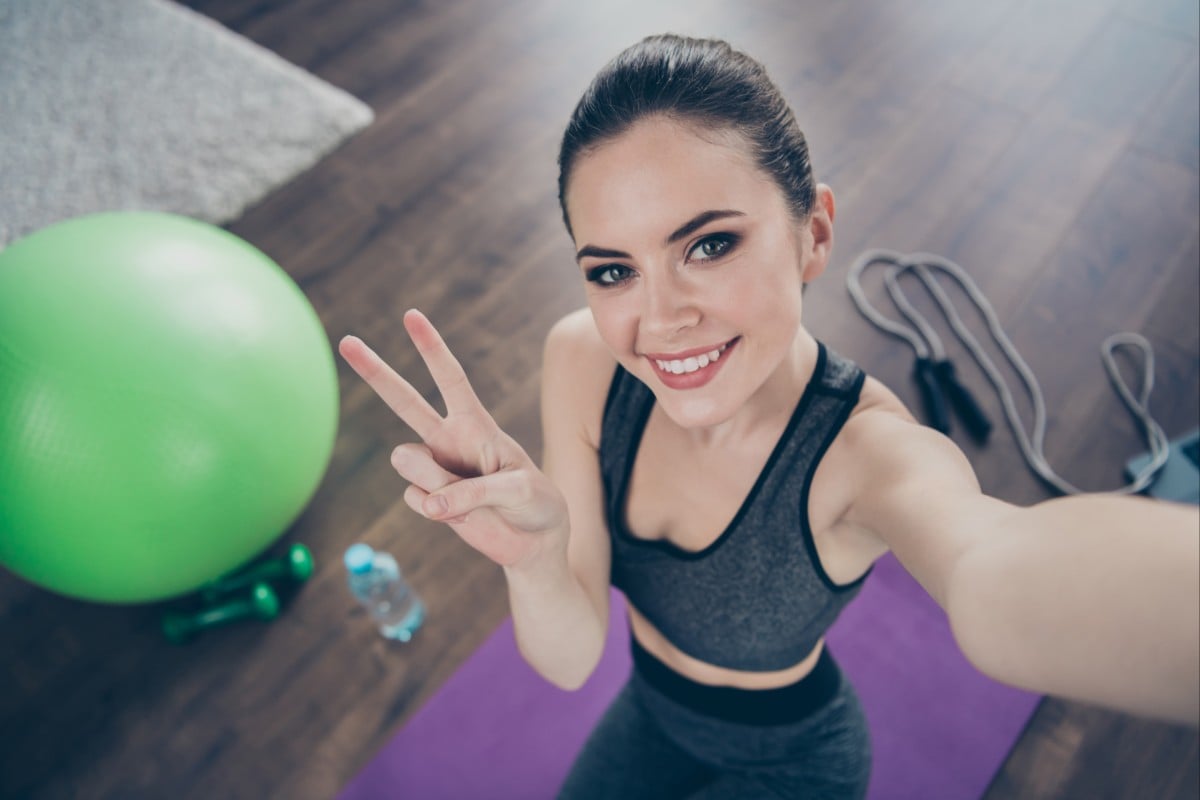
Study Buddy (Explorer): Exercising in make-up is bad for your skin, study finds
- Using cosmetics on your face while working out is more likely to cause harm to your skin than good
- Each week, this page presents an interesting story that we have adjusted to be more accessible for all English learners
 More people are using make-up while exercising, which is likely to be harmful for your skin. Photo: Shutterstock
More people are using make-up while exercising, which is likely to be harmful for your skin. Photo: Shutterstock Content provided by British Council
Read the following text, and answer questions 1-9 below:
[1] While exercise is great for increasing nourishing blood flow to the skin, using cosmetics on your face while working out could do more harm than good. Researchers at Korea National University of Education and Texas A&M University published their findings in the Journal of Cosmetic Dermatology in March.
[2] They describe the negative effects wearing cosmetic foundation during aerobic exercise has on the skin. “Foundation cream, where applied, caused dryness of the skin and clogged pores, potentially leading to acne and other problems. People with dry skin conditions are most at risk,” said Dr Sukho Lee, a professor in the Department of Counselling, Health, and Kinesiology at Texas A&M University in San Antonio, Texas.
[3] There is a growing trend of people wearing make-up while exercising, but little research has been done on this. A recent private sector survey of 2,201 people in the United Kingdom reported that up to 60 per cent of gym goers wore face make-up at the gym. Lee and his research team decided to do their study on teenagers at college.
[4] They recruited 43 college students, 20 men and 23 women. Participants first washed their faces with a cleanser before researchers measured skin variables on different areas of their faces, including pore size and sebum oil production. They then applied a chemist brand cream foundation to their foreheads and under-eye areas. The bottom half of the face was left make-up free.
[5] The students then ran on a treadmill for 20 minutes – for five minutes at 4.8km/h, 10 minutes at 6.4km/h, and five minutes at 8km/h. Before and after the exercise, a scanning device recorded the skin’s moisture levels, oil amounts and pore size on different parts of the face.
[6] The results were surprising. “We did not expect to see the huge impact of the one layer of foundation cream on the skin after only 20 minutes’ exercise,” Lee said. Moisture increased after exercise in both the non-make-up and make-up zones; but there was a greater increase in moisture in the make-up zones. “A higher moisture level on the make-up side of the skin is evidence of poor evaporation,” he says.
[7] Allowing pores to expand to enable sweat to escape is important in helping the body regulate temperature during exercise, particularly as heart rate and metabolism increases. The skin, therefore, plays an important role in releasing excess body heat.
[8] Another notable finding was that pore size increased in skin without make-up after exercise, but not significantly in skin with make-up. This suggests that wearing make-up can block pores. Oil levels also increased in the zones without make-up, and decreased in the zones with make-up, suggesting that it may be difficult to maintain proper oil levels on the skin when wearing make-up.
[9] Lee said the foundation might have been interfering with the skin’s ability to regulate oil levels. “For skin health, it’s best to exercise with your make-up removed,” said corresponding author Dr Dongsun Park of the Korea National University of Education.
Source: South China Morning Post, April 5
Questions
1. How does exercise benefit the skin according to paragraph 1?
______________________________________________________________________________________________________
2. Find an idiom in paragraph 1 that means “to be damaging and not helpful”.
___________________________
3. According to paragraph 2, which group of people are most likely to get acne if they wear cosmetic foundation while exercising?
______________________________________________________________________________________________________
4. Decide whether the following statements in paragraphs 3 and 4 are True, False or the Information is Not Given. Fill in ONE circle only for each statement. (4 marks)
(i) Wearing make-up during exercise is becoming increasingly popular.
(ii) Most of the people mentioned in the survey are between 20 and 30 years old.
(iii) The participants washed their faces with a cleaning product after the researchers measured their pores and sebum oil production.
(iv) Half of the participants applied make-up, while the others did not.
5. In paragraph 5, the scanning device measure _______ the skin.
A. the amount of sebum oil in
B. the water content present in
C. the size of the pores on
D. all of the above
6. What was the difference in moisture increase between areas with and without make-up according to paragraph 6?
______________________________________________________________________________________________________
7. Based on paragraph 7, the skin’s function during exercise is to …
A. absorb UV rays.
B. release excess body heat.
C. prevent muscle soreness.
D. improve blood circulation.
8. What did the researchers observe about pore size after exercise according to paragraph 8?
______________________________________________________________________________________________________
9. According to paragraph 9, it is best to exercise with …
A. only foundation on the cheeks.
B. some foundation on the under-eye area.
C. light foundation on the forehead.
D. no make-up at all.
Answers
1. It increases nourishing blood flow to the skin.
2. do more harm than good
3. those who have dry skin conditions
4. (i) T; (ii) NG; (iii) F; (iv) F
5. D
6. The area with make-up showed a greater increase in moisture compared to the area without.
7. B
8. Pores became noticeably larger in areas of the skin without make-up after exercise, but this increase was not significant in areas with make-up.
9. D
